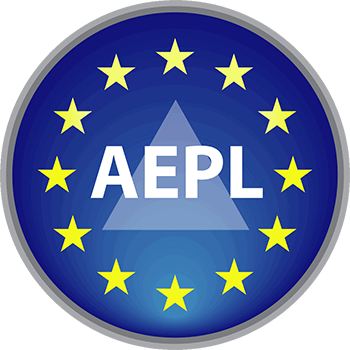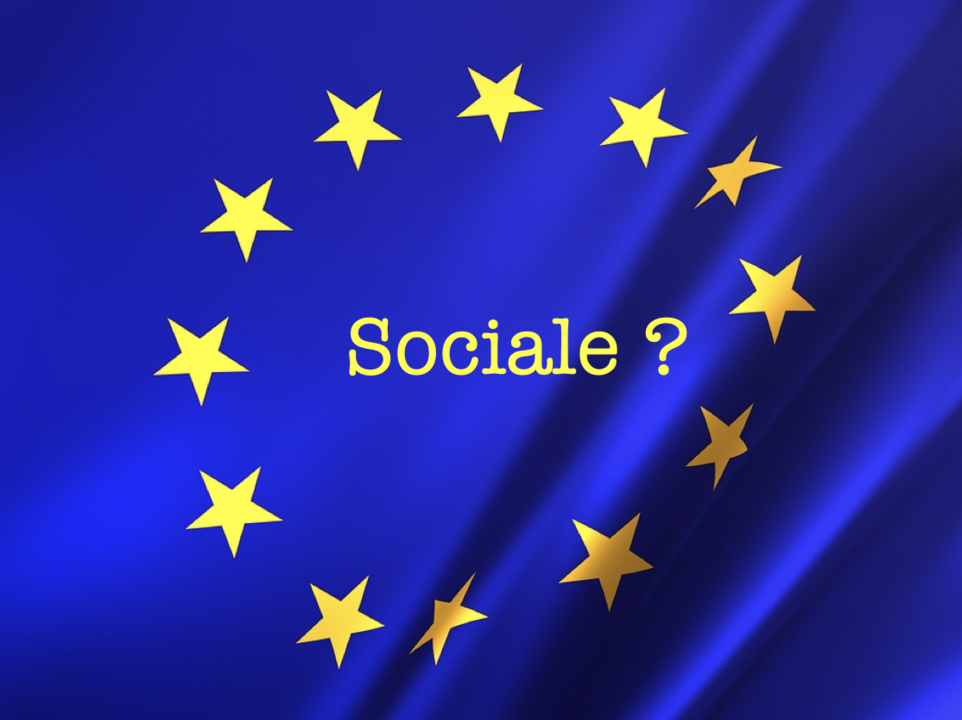SOCIAL EUROPE DOSSIER
1. EAFT is aware of and alive to the economic changes affecting the EU and its integration project and, more specifically, to the foreseeable changes in the institutional, political and security architecture of Europe.. In this context, our Association is closely monitoring two groups of emerging issues:
That of the accession of 9 candidate countries and the accession process marked by the acquis communautaire, which will have to be made clearer, more effective and transparent for EU citizens. From a number of angles, this is a fundamental issue, insofar as common sense tells us that it will not be possible to postpone an in-depth reform of the EU's institutional, political and security architecture, when the EU could eventually comprise 36 Member States;
Similarly, EAFT is targeting the accession process, hoping that it will be more efficient, by setting an objective and an accession date to avoid rising frustration of the candidate states when they are, on average, faced with a 14-year delay before the end of the process.
There is also the European Political Community initiative, the next meetings of which are scheduled to take place in Moldova and Portugal. This new forum, the brainchild of François MITTERAND, is becoming an essential forum for dialogue on peace and security in Europe, not only with the candidate countries, but also with non-candidate third countries. The EU institutions must take a stand on this issue, specifying the supporting initiatives they intend to take in agreement with the EU Member States.
2. Even more essential and fundamental - given its dual mandate of supporting the EU integration project and promoting the separation of European institutions and religions, while supporting a dialogue organised by Article 17 - EAFT draws the European Commission's attention to the two great absentees from the paradigm changes underway or in prospect, both in the economic sphere and in the institutional, political and security architecture of the EU.
3. The first major absence dealt with here is the social pillar of European integration. The second major omission is the people, the European citizen and the functioning of European democracy, taking into account the conclusions and recommendations of the Conference on the Future of Europe, which seem to have been put on hold so far.
SOCIAL EUROPE
4. The first area of tension relates to the consequences of the current health and, above all, economic crisis.
How many European citizens currently benefiting from massive emergency measures since 2020, in particular through short-time working, will be able to regain a decent standard of living and income when this support is reduced? How many of them, on the other hand, risk falling into poverty and social exclusion?
Data for 2020 has not yet been refined. But a relevant indicator, prior to the start of the health crisis, is that of people at risk of poverty and social exclusion. It points to a worsening situation in the years ahead, despite massive aid.
In 2019, more than 92 million citizens of the EU-27, i.e. 21.5 % of the population, were at risk of poverty or social exclusion. This level is all the more striking as it includes 19.4 million children, or almost one in 4 European children. This means that these people are affected by at least one of the following three conditions: the risk of poverty after social transfers (known as income poverty), severe material deprivation or living in very low work intensity households. This risk particularly affects young people and women. For women, the risk is 22 % compared with 20.2 % for men in 2019. The proportion of young people aged between 18 and 24 affected by this situation is 27.8 %.
5. A second area of tension is emerging from the complex interweaving of social and labour market policies, in an approach that pits those who favour greater EU competence against those who take a resolutely sovereignist view of the welfare state.
6. A 3rdth area of tension is also evident in European solidarity flows and mechanisms between 'creditor' and 'debtor' countries, broadly corresponding to a North-South divide. A mirror of the heterogeneity of living standards in the Europe of 27, this voltage line crosses anotherthe free movement of workers and the often-mentioned risks of social tourism and social dumping, particularly in relation to the policy of enlargement to include the countries of Central and Eastern Europe and, in future, the Balkans
In poll after poll, election after election, a 4rd area of tension is taking shape, with an increasingly right-wing political discourse, whose agenda is fuelled by a retreat into identity and security, combined with economic advocacy based on a rather vague strategy of defending national and local interests against the impact of decades of uncontrolled measures to open up trade.
7. Any response to these first 4 lines of tension induces a 5rd area of tensionIt's a choice between a worst-case scenario and a best-case scenario. The worst case, as we have already heard, is that of the tidal waves of identitarian withdrawal and a spontaneous, unregulated market order. The best: a Europe where, realising the interdependence of member countries on a number of priorities and policies, we can finally question the initial choice of the European integration project, i.e. social standards resulting from economic integration, the primacy of the internal market and European competition law.
In other words, it means returning to the equation of rebalancing the EU's legal and institutional order between its dominant economic pillar, its social pillar and its citizens' pillar.
WINDOWS OF OPPORTUNITY
8 - Let's remain realistic and clear-sighted. Without structural changes, without a rebalancing of its legal and institutional order, the EU will remain, under the current treaties, committed to the primacy of economic freedoms in the construction of an unfettered internal market, over social policies and social justice.
9. EAFT and the advocates of profound structural change insist that any breakthrough in this area will only come into being if the EU has the ability to influence social redistribution mechanisms which are currently the responsibility of the Member States.
For the latter, this means asking the question of whether or not the States would accept, à In the long term, to transfer to the EU "social competences" that will create a sense of belonging to a European community, such as social security systems, collective labour relations and wage policy. Let's face it, such a prospect is a long-term utopia. It can only be conceived in close association with a strong political integration project, possibly supported by a smaller number of EU Member States. But as the Treaties currently stand, and in particular Article 153 of the TFEU, this prospect remains utopian.
10. A second window of opportunity arises from the social mission conferred on the EU and its acquis. The centre of gravity of this mission is the EU Charter of Fundamental Rights.
11. Connected to the second, a 3rd window of opportunity opens with the adoption in December 2017 of the European platform of social rights16 and the action plan for its implementation17 supported by the recent Lisbon Social Summit (8-9 May 2021). This platform is, above all, a political act. It does, however, open up prospects for action on the risks associated with changes in the workplace on the basis of several of the 20 principles:
By effectively implementing its 20 principles, under the impetus of the European Commission with the support of the European Parliament and Council its value will therefore depend on the action plan and its results:
Several of these principles have been incorporated into various legal instruments, including the revision of directives, such as the one on working time, but also through new mechanisms, such as the creation of a European Labour Authority, which in effect becomes a European agency;
Through the action of the European Court of Justice, which could refer to this platform in its work of interpretation, insofar as it translates many of the principles of the 2000 Charter, incorporated into the Treaties.
12. A 4th window of opportunity is taking shape through the adoption of a genuine ex-ante approach which would consist, from the design phase, of subjecting social and ecological criteria and criteria, lhese projects are part of both the 2021-27 multiannual financial framework and the EU NEXTGENERATION plans.
The future will tell whether such an ex-ante approach can be imposed through the adoption of binding rules and standards, the priority being to to link the creation of value from different projects and investment decisions to social and environmental standards.
It would be a kind of revolution in normal practice. In the case of public investments financed by European public debt, European citizens would be very much in favour of this impact assessment and the use of such grids. A practical example would be to insert such standards into the mechanisms for inviting tenders and submitting projects at EU and Member State level, maximising the social impact and compliance with environmental standards.
13. A 5th and final opportunity on the freedom of movement of European citizens in Europe. strengthening fair mobility and the conditions for transnational mobility
This subject is perhaps the most revealing for understanding not just the connection between social issues and economic performance, but also the need for an EU-level cohesion policy. Acceptance of this mobility is determined largely by citizens' conviction that it is fitted effectively into a regulated legislative framework limiting potential risks. In 2019 mobility touched almost 18 million people, about 18 % of the EU's active population (aged 15-64).
TO GET TO THE HEART OF THE MATTER
14. This note has explored lines of tension, as well as windows of opportunity which should realistically support a social Europe. However, the essential message that EAFT wishes to convey today is that any breakthrough can only be achieved if it is closely linked to a strong political integration project, possibly supported by a small number of EU Member States.
15. The EU accounts for 5.5 % of the world's population, 30% of world trade and 55% of world social spending, giving it one of the world's highest levels of social protection. In the future, it will be very difficult to increase this level of spending, and it is therefore through its capacity to influence social redistribution mechanisms that the EU will ensure a decent standard of living and work for its citizens
But the EU can only play this role if it is closely associated with a strong political integration project, possibly supported by a small number of EU Member States.

























